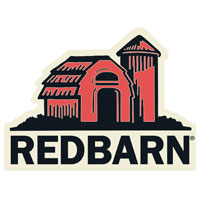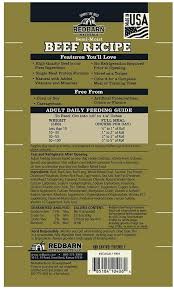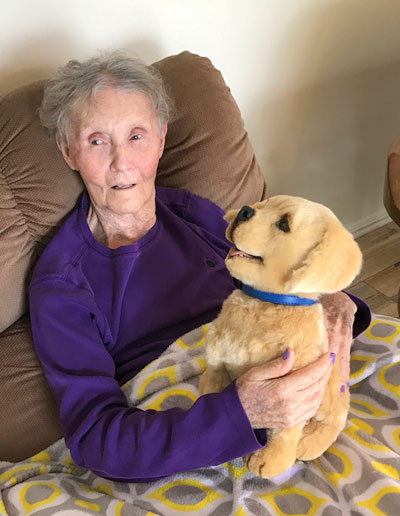Decoding The Label
 Lindsay Tracy, Redbarn
Lindsay Tracy, Redbarn
We love our pets and we feed them the best food that we can. Sometimes we won't eat the best ourselves, but we make sure that we buy a good quality pet food for our pets. We do this by reading the labels, which isn't always easy to understand.
Lindsay Tracy is the Vice President of Business Development at Redbarn. She's discussing an article that they have on their website called, Decoding The Label. Lindsay tells us that there is an overarching organization that monitors pet food called AFCO, which is the Association of Animal Feed Control Officials. They set the standards for nutrition and animal feed. They monitor the labeling, the ingredients and the nutritional requirements to make sure that what we're feeding our animals is adequate. AFCO itself isn't regulated. However, it is a body of the FDA (Food and Drug Administration). AFCO is a voluntary organization of the government officials through the FDA. Basically they provide the stamp of approval on labels to verify to the pet parents that yes, this meets the minimum requirements and can be sold on the shelf.
So how do you decode a label? For example, what does it mean if you see a particular label that states it is a beef recipe? This means that 25-percent of the total formula is beef. So if you see those words and it says beef that means it could even be a combination of beef and maybe even beef heart as well. As long as those two parts equal 25-percent. Another example is if you see beef and pea that could be 10-percent beef and 15-percent pea protein. The words on the outside of your package are critical to understanding the highest component of the protein in your formula.
With human food, you may have seen foods that claim they are cheese flavored and then you find out that there's no cheese in it whatsoever. Is that the same thing with pet food? If it says beef flavor, is there necessarily beef in it? AFCO defines a flavor as a condiment or for example, maybe cinnamon, which falls into the flavor category. As long as that condiment or flavor is detectable or is a distinctive ingredient, it can be called a flavor.
 What if the first ingredient on a label claims to be meal, for example chicken meal, is that good or bad? Lindsay explains that that is really good and meal is a great ingredient. What essentially a "meal" is, is tissue that has been cooked where the fat and water have been removed. It's either cooked or baked until it's basically a concentrated powder. The quality of meal can vary, but that can apply to your fresh meat as well. Just like when you go to the grocery store for yourself, you can get all different levels of quality of meat. Same thing would apply here. So you want to find a company that is very transparent about where they source or how they source their ingredients. Typically you can find that on their website or marketing material, as it's not always located on the packaging. So "meal" is a great ingredient. It is just a higher a higher density ingredient then fresh meat, which includes the water weight.
What if the first ingredient on a label claims to be meal, for example chicken meal, is that good or bad? Lindsay explains that that is really good and meal is a great ingredient. What essentially a "meal" is, is tissue that has been cooked where the fat and water have been removed. It's either cooked or baked until it's basically a concentrated powder. The quality of meal can vary, but that can apply to your fresh meat as well. Just like when you go to the grocery store for yourself, you can get all different levels of quality of meat. Same thing would apply here. So you want to find a company that is very transparent about where they source or how they source their ingredients. Typically you can find that on their website or marketing material, as it's not always located on the packaging. So "meal" is a great ingredient. It is just a higher a higher density ingredient then fresh meat, which includes the water weight.
Should you look for a food that claims to be complete and balanced? Lindsay explains that this is confusing and that there are different identifiers in pet food. There's one that's called "all life stages" and "all life stages plus large breed." There's also a "maintenance complete and balanced formula."
With regard to all life stages plus large breed, this is the higher standard AFCO applies to pet food. For example, it'll have 22.5-percent protein as opposed to the maintenance diet. Now that minimum could be 18-percent protein. So if you see "maintenance diet" on your label, this would not apply to your large breed dog. And that's due to the fact that there's too much calcium in the formula. Not too much in the sense of not being good for your regular 30-pound dog, but large breeds usually have some hip issues due to their size. So the calcium is above the maximum value that they should have. The maintenance diet is really for adult only. You don't want your puppy to have that. You really don't want your pregnant or lactating dog eating a maintenance diet. It's really not for a dog with hip issues. A maintenance diet is really for that core group of dogs that need a lower fat diet. So it could be best for dogs that lay around on the couch and are a little less active. If you have a significant issue with your dog, they should eat "all life stages."
Are there truly natural pet foods? Yes. Natural would mean that the formula is free from artificial preservatives, artificial flavors or colors. Often a complete and balanced diet will say natural with an asterisk or with added vitamins and minerals.
Vitamins and minerals are added frequently to human food. Is it essential to add these to our pet's food as well? Lindsay states yes, definitely! There are essential vitamins that animals can't produce on their own and they must get them from food. For example, you will see EPA and DHA added to pet food. These help with the brain and are a heart-healthy nutrient.
Redbarn has a commitment to quality assurance for all of their pet foods. As pet parents and pet food manufacturers, they understand pets can't speak for themselves and they have a duty to speak for them.
Visit Website
Robotic Puppies - Not Toys
Tom Stevens, Tombot
 Scientists estimate as many as 97-percent of seniors suffer from behavioral and psychological symptoms of dementia. That's why Tom Stevens, the CEO from Tombot, teamed up with Jim Henson's Creature Shop and created an affordable robotic puppy to provide companionship for seniors. Tom explains why this is so personal and how it's making a difference.
Scientists estimate as many as 97-percent of seniors suffer from behavioral and psychological symptoms of dementia. That's why Tom Stevens, the CEO from Tombot, teamed up with Jim Henson's Creature Shop and created an affordable robotic puppy to provide companionship for seniors. Tom explains why this is so personal and how it's making a difference.
Robotic dogs have been around for a few years and play a very important role for those that have Alzheimer's or dementia. While the previous robotic dogs haven't been very lifelike and were very expensive, Tom has created Tombot, an affordable lifelike dog with lifelike movements.
The invention of Tombot came from necessity. In 2011, Tom's mother was diagnosed with Alzheimer's. Of the many bad days they went through early on, by far the worst was when he had to take away her dog. She had a beautiful 2-year-old Golden Doodle. While these dogs ordinarily have a lovely disposition, his mother had actually managed to train her dog to be aggressive towards her caregiver, who she did not like very much. Because of this, anytime the caregiver would enter the room, the dog would growl. His mom would then laugh and pet her dog, reinforcing the bad behavior. It was no surprise that it wasn't very long before Tom had a real problem on his hands. Fortunately, he was able to find a new home for his mother's dog with some close family friends, but his mother was devastated.
Growing up in a house full of animals, Tom's mother was really the impetus behind all of the animals they had. She always treasured animals and particularly dogs. This Golden Doodle was her last animal and her primary companion at home. Removing her dog was almost like taking off her leg.
When learning more about his mother's disease and her circumstances, Tom found that they weren't unique, in that she had Alzheimer's and was not able to safely or practically care for a live animal, as do a lot of seniors. Tom then started looking around for substitutes for live animal companions and he didn't find anything that he liked that was either affordable or something that his mother would respond to. So he started experimenting with robots and found that she responded quite readily to them.
Tom's background is in hi-tech and he's been in the computer world for over 35 years. So he was naturally curious as to whether technology might be able to play a role. In his research, he came across some of the more expensive robots and read the science and found that they actually provide quite a bit of relief from the symptoms associated with dementia. But the fact was, they were simply too expensive. So he thought that, well, maybe a more affordable version might make some sense!
In creating Tombot, the first thing that Tom learned is that anything on the ground is an extreme tripping hazard for a senior with dementia. Seniors frequently trip and fall, oftentimes over their own pet. So he learned that if he was going to be effective and provide something that was safe for use, it needed to be a lap dog and not a dog that could walk around.
 In all, Tom's worked with over 700 seniors with dementia. He learned that first of all, they preferred animated objects to non-animated objects, or things that moved. Secondly, they preferred realistic appearance to toy-like or cartoon-like or abstract appearance. Thirdly, and most importantly, they preferred objects that behaved realistically, and he didn't know how to do that.
In all, Tom's worked with over 700 seniors with dementia. He learned that first of all, they preferred animated objects to non-animated objects, or things that moved. Secondly, they preferred realistic appearance to toy-like or cartoon-like or abstract appearance. Thirdly, and most importantly, they preferred objects that behaved realistically, and he didn't know how to do that.
So Tom went looking in the animatronics world, knowing that being in Hollywood already was convenient for his search. He ended up selecting the Jim Henson's Creature Shop to provide the artistic design service for their dog. Jim Henson was the creator of the Muppets, which are very lifelike looking puppets.
It turns out the two creative heads there, a gentleman who's the head of the creative director and another gentleman who is the head of Animatronics; both had fathers at that time who were suffering from dementia. So they had a very strong personal connection to Tom's mission and felt that this was something that was really appropriate for them to work on. They began with simply experimenting with how to replicate the internal anatomy of an actual dog.
They went through multiple rounds of trials to come up with something that they really liked and created Jenny, which is his fifth generation prototype. Jenny is designed to lay comfortably on the lap of a senior, or on a chair, or a table close by, anywhere that they can remain in close physical contact. The animations include eyes, ears, eyebrows, mouth, neck and tail capabilities. Jenny has 16 servo motors, seven alone in her neck, and that's what gives Jenny the ability to not only have significant range of movement, but have those fine motor movements that are so common to a living animal. Then they tested that with the seniors to get their response.
Unfortunately, Tom's mother passed away, but for years, he worked together with her, having her test the prototypes, and it was what she wanted to talk about. Alzheimer's and other forms of dementia are very, very difficult on family members. As a result, many difficult decisions have to be made that are frustrating. From a child's perspective, taking over for a parent was emotionally very difficult. However, the robot gave them a point of commonality where they could come together and work together. This was always what his mother wanted to talk about first whenever Tom saw her. She would ask things like, "How are the robots coming? Do you have the next one for me?"
Tom's mother always knew it was a robot and there was an ethical concern that Tom had from the very beginning in that he didn't want to trick anybody. It turns out that people with dementia, whether it's mild or moderate dementia, they know that it's a robot and actually prefer that it's a robot to a live animal. For those with severe dementia, they may or may not be able to distinguish between a live animal and the robot, but up until that point they are able to distinguish between the two.
Tom tells us that they are receiving an overwhelming response to Tombot, not only from spouses or children of people with dementia, but also for a number of other uses. They even have quite a few that were preordered for children with autism. Adults that have major depressive disorder or PTSD are even buying them for themselves.
 Tombot is also working with the nation's largest chain of hospitals for inpatient use in places where live therapy animals are not typically allowed to visit, such as the emergency room or an ICU.
Tombot is also working with the nation's largest chain of hospitals for inpatient use in places where live therapy animals are not typically allowed to visit, such as the emergency room or an ICU.
Tombot is a mission-based company. Tom explains that he had the good fortune of selling his company a few years ago and thought he was retired. That was the same year that his mother was diagnosed with Alzheimer's. It really gave him a focus, meaning and purpose for how he would spend the next several years. It's important for him to be able to make a difference and his products actually provide a medical benefit. It's not an entertainment device. It's not something that you would buy as opposed to your next Sony PlayStation. It really is meant to provide someone with the ability to self soothe through anxiety, loneliness and depression, where they can't safely or practically own a live animal.
Visit Website
How to NOT Train a Dog - Dr. Debbie
 The other day I was walking my dog in a community area and encountered a lady with two Shih Tzus. As we approached, her dogs rallied with barking and tugging on their leashes. I asked if her dogs were friendly, so as to decide if we could approach. The lady scowled, embraced her still barking dogs and grumbled, "Do they look like they're friendly?"
The other day I was walking my dog in a community area and encountered a lady with two Shih Tzus. As we approached, her dogs rallied with barking and tugging on their leashes. I asked if her dogs were friendly, so as to decide if we could approach. The lady scowled, embraced her still barking dogs and grumbled, "Do they look like they're friendly?"
Realizing this dog owner was more unsociable than her dogs, I decided to vamoose, but not before I envisioned this blog topic - how pet owners mold unsocial dog behavior.
Unwanted doggie behavior such as lunging and barking on the leash become established when the dog owner hasn't made it clear what the appropriate behavior is, fails to correct and redirect to a more suitable behavior, or simply reinforces the undesirable behavior through actions or words. Face it - there aren't bad dogs, just poorly trained ones.
Avoid making these top 5 training mistakes:
1. Secluding Your Dog in the Backyard
Keeping your dog in lock down almost guarantees problem behaviors will develop such as biting, inter-dog aggression and phobias to anything from noises to car travel. Isolated dogs lack the experience and confidence when faced with novel situations while socialized dogs adapt easily.
I see it all the time - the dog owner prides herself in keeping her dog safe. "I didn't want Fido to catch any diseases as a pup, so I didn't let him out of our backyard till he was a year old." The overwhelming fear of infectious diseases like parvovirus causes some well-meaning owners to confine their new dog or puppy to the limits of house and yard. Even more extreme is never allowing a puppy to step foot outside until after their last puppy vaccinations! Puppies are most adaptable to new experiences between 6 and 16 weeks - this is the time to expose them to unfamiliar places, people and animals.
That doesn't mean you should take your eight week old puppy to dog parks, but rather to use good sense selecting low dog traffic areas and visiting with family and friends outside of the home that have properly vaccinated pets.
2. Skipping Obedience Training
Going to school is a must for any new dog to a home, whether a puppy or adult. No two dogs are the same, and each learns differently. Formal obedience training is a useful tool to gently reaffirm who's in charge and sets the rules in the house. Statistics show that dogs that go through formal obedience training are less apt to develop behavior problems and be relinquished to shelters.
 3. Reinforcing Fear at the Veterinary Office
3. Reinforcing Fear at the Veterinary Office
In the exam room I cringe when I see a dog owner comforting a nervous, fearful or aggressive pet. That "good boy" and pat on the head reinforces your dog's behavior, making it more likely that on the next hospital visits he'll behave the same, or worse. Some problem behaviors escalate making it difficult for the veterinary staff to examine or treat the animal. This may mean additional costs for sedation or anesthesia for routine medical needs.
It's natural for a pet owner to want to reassure a pet when he is frightened and it can be difficult to hold back the urge to soothe him. However, the best strategy is to ignore those fearful behaviors in the vet office. Don't be tempted to kiss, snuggle or hold Fido on your lap when he is misbehaving. Rather, place the dog on the floor, refocus your dog's attention to you, and cue him to "sit" or "lie down."
4. Not Using Food as a Reward
Food shouldn't just be for the taking. Don't leave food out for your dog to graze whenever he wants and don't give treats just for the sake of giving a treat. Present food and treats as a reward for good behavior such as sitting quietly, going to a pillow, or performing a trick or obedience work. This places you at the top of the household hierarchy. You become the provider of great edibles in the house, and your dog will be motivated to listen to your requests in other situations.
We all love to spoil our dogs and give treats at times. But be sure to give treats for a reason, or you will have a spoiled doggie brat on your hands.
5. Not Exercising Your Pet Enough
Inadequate exercise can result in obesity and boredom, and may lead to problem behaviors like separation anxiety, destructive chewing and excessive barking. Dogs should get 30 to 60 minutes of sustained physical activity each day for optimum mental and physical benefit. And no - letting Buffy run around the backyard during the day is not adequate exercise.
Not all breeds are cut out for all exercise - a Labrador may enjoy retrieving games or swimming, a Jack Russell terrier may thrive with jogging or Frisbee, while a Basset hound will be satisfied with a leash walk.
Your dog can't be a well-adjusted, socialized canine citizen without you, as the pet owner, taking an active role in training. Put the time in, and you'll be thanked many times over with an outgoing, friendly canine pal that can accompany you on life's adventures.
Featured veterinarian known as "Dr. Debbie" on national pet radio program, Animal Radio. Ebook author of "Yorkshire Terriers: How to Be Your Dog's Best Friend"; "Pugs: How to Be Your Dog's Best Friend"; "Mini Schnauzers: How to Be Your Dog's Best Friend"; and "Shih Tzu: How to Be Your Dog's Best Friend." Dr. Debbie's books.
Visit Website
Animal Radio News - Lori Brooks
 Animal-Free Mouse Treats For Cats
Animal-Free Mouse Treats For Cats
A pet nutrition startup is aiming to launch a line of clean meat for cats made from cultured mouse cells. The US based startup is working on clean mouse meat cat treats, based on a cat's natural prey. "This meat is packed with the same protein that a cat in the wild would consume and does not contain the growth steroids or any trace of Salmonella and Listeria found in meat used to make commercial pet food," states the website. Unlike many companies working in the clean meat industry, the product is also entirely animal-free. It's kind of complicated, but fetal serum from cows is used to create lab-grown protein. It's called cellular agriculture and what it does is offer the opportunity to efficiently produce protein food sources for our pets while reducing the environmental impact of raising and feeding all those traditional food sources.
 Beards Carry More Germs Than Dogs
Beards Carry More Germs Than Dogs
If you don't kiss your dog, but your significant other has a beard, heads up! A study finds that men with beards carry more germs in their beards than a dog's normal germs. Swiss researchers tested the facial hair of men and dog fur from various breeds and found a significantly higher bacterial load in the men's beards compared with the dogs' fur. Some of the men tested positive for microbes that actually posed a threat to human health. Experts say men should shampoo their beards regularly.
Planning To Rob A Store? Don't Take Your Dog!
Police in Wisconsin say a woman, her adult son and a dog named "Bo" caused quite the scene in a Wisconsin Walmart. According to a post on the Police Department's Facebook page, they responded to a Walmart shopping center for reports of a theft. When they arrived, officers found 46-year-old Lisa Smith screaming in the store's entryway trying to catch her unleashed dog, Bo. While the mother was in the front of the store, her 25-year-old son was allegedly naked and exposing himself to customers in the clothing section of the store. Bo, still unleashed and on the loose, grabbed a box of Bread Muffin Mix and attempted to leave the store. Eventually everyone was rounded up. The two humans were arrested and Bo was taken to the Humane Society.
 Did Actor Keanu Reeves Save Dozens of Cats from Euthanasia or Not?
Did Actor Keanu Reeves Save Dozens of Cats from Euthanasia or Not?
In addition to being a movie star, Keanu Reeves has a reputation for simply being a good person. The Internet is full of stories celebrating his many acts of kindness. However, you can't believe everything you read online. That's not to say Keanu isn't a nice guy, but stories are made up about him doing nice things because of this. For example, the Facebook page "Love Gatos" (Love Cats) claimed that Reeves had saved numerous cats from euthanasia and the post included an image that showed the actor with dozens of feline friends that supposedly live in a special home bought just for them. Unfortunately, it's the same photo-shopped imaged of Reeves that has circulated on the Internet for several years, which originally had an image of another man.
California Considers Statewide De-Clawing Ban
A California State Assembly committee is considering a bill to ban the de-clawing of cats in what will be the first step for statewide approval and adding momentum for federal laws against the practice.
 Listen to the entire Podcast of this show (#1117)
Listen to the entire Podcast of this show (#1117)





